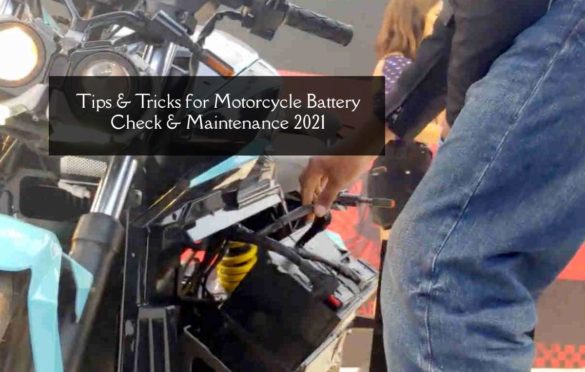
Tips & Tricks for Motorcycle Battery Check & Maintenance 2021
Motorcycle Battery – “Keep your bike high & your head up.” If your bike is not getting started or maybe not up to the point. Then make sure to check it in a proper manner to avoid any terrible ride-stopping surprise. There is some test that only runs on the battery, rather than the whole charging system, with a variety of tools. But there are some common battery problems that can be handled easily and can provide you a wonderful riding experience. We at The Riders Market is the perfect guide for you that will let you know about the common tips and tricks for testing a motorcycle battery. So, you’ve come to the right article to learn how to check your bike’s battery health if you are a rider. Even if you are not facing any problem with the motorcycle then still you can load test your battery as part of your routine preventive maintenance schedule. You can continue reading the article for better understanding and forgetting the knowledge regarding Motorcycle battery check and maintenance.
Safety Instructions for Motorcycle Battery testing
Checking the battery of your motorcycle involves a certain amount of risk if you know about the device. That’s why it is important to make sure to know about the motorcycle battery. As generally, the bike battery contains acid and can produce very flammable hydrogen gas. Therefore, for performing any test and check must follow the mentioned safety precautions for a better check.
- Know detail about motorcycle i.e. Service manual guide
- Make sure to keep open flames or sparkling sources away from the battery for avoiding any burn and damage
- Work in an open ventilated area
- Wear eye protection to avoiding any sparkling
- Wear rubber or latex gloves
- Inspect the battery for leaks, cracks, or corroded terminals
3 Tips for Testing a Motorcycle battery in 2021
We at The Riders Market have brought the top ways for testing the motorcycle battery. Because regular testing helps in guaranteeing its long life. In a comparison of a four-wheeler, the bike battery needs more maintenance and care because they are lead-acid batteries. Here are some tips on how to check your motorcycle’s battery.
- Take Safety Precautions before testing Motorcycle Battery
It is important to look for safety procedures before testing the bike battery. Because some batteries contain lead-acid and other inflammatory substances that might cause serious injury or harm. Make sure to check for leaks, corroded terminals, or cracks in the battery while testing. Don’t forget to wear hand gloves and eye protection. - Initial Testing
It is one of the most critical steps that includes the tools like a digital voltmeter alongside protective equipment. In this start, we confirm whether the battery is fully charged or not. Make sure to cool the battery for at least one hour before testing to avoid any injury. So, take readings and record the voltage. If any reading that is 12VDC and below means that the battery is not fully charged so wait and first fully charge the battery for further steps. - Load Testing
Load testing is done to check what percentage it is charged and how much more charge is needed to be fully charged. There are even non-conventional ways to do a load test that can be done by using a digital voltmeter or a temperature-compensated hydrometer. Just make sure that battery testing must be done in an open area to ensure the transmission is neutral.
Wrapping Up
We hope that you have got the right information that you are looking for motorcycle battery testing. All the details mentioned above involves the tips and tricks that analyzed by professionals. So, if you are a rider and want a long-life motorcycle battery then, following the instructions will be entirely effective for you. Without a good battery, you’re not riding happily anywhere. Even if there is any minor fault in the bike’s battery it will ruin your whole riding experience. Follow the above guidelines provided by The Riders Market and make your riding journey incredible and awful. Make it a routine to do the same regularly for preventing the bike’s battery health for the long term.

